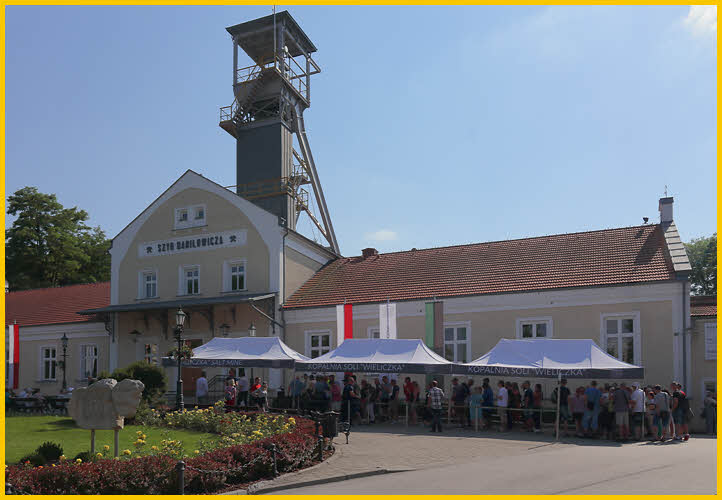Poland
Entrance
 |
The Wieliczka Salt Mine reaches a depth of 327 meters, and extends via horizontal passages and chambers for over 287 kilometers (178 miles). The rock salt is naturally of varying shades of grey, resembling unpolished granite rather than the white crystalline substance that might be expected.
Since the 13th century, brine welling up to the surface had been collected and processed for its sodium chloride (table-salt) content. In this period, wells began to be sunk, and the first shafts to be dug to extract the rock salt.
King Casimir III the Great (reigned 1333–70) contributed greatly to the development of the Wieliczka Salt Mine, granting it many privileges and taking the miners under his care. In 1363 he founded a hospital near the salt mine.
Over the period of the mine's operation, many chambers were dug and various technologies were added, such as the Hungarian horse treadmill and the Saxon treadmill for hauling salt to the surface. During World War II, the mine was used by the occupying Germans as an underground facility for war-related manufacturing.
The mine features an underground lake, exhibits on the history of salt mining, and a 3.5-kilometer (2.2-mile) visitors' route (less than 2% of the mine passages' total length) including statues carved from the rock salt at various times.
Despite the mine’s remarkable history, it is the miner artwork (and later artwork by others) that brings over a million tourists to the Wieliczka Salt Mine each year. The miners slowly turned the mine from a dark cave into a majestic royal location. By the 19th century, giant salt-crystal chandeliers lighted the underground complex. Striking salt-carved monuments and reliefs decorated chambers available to tourists, resulting in Europe-wide fame. In the early 1900s, the Kinga Chapel was formed, a chamber filled with large biblical reliefs.
